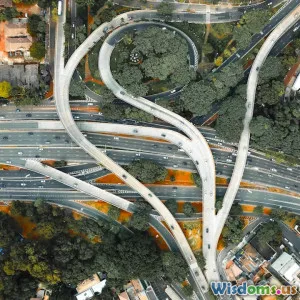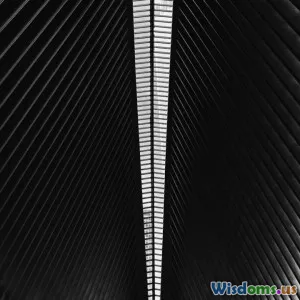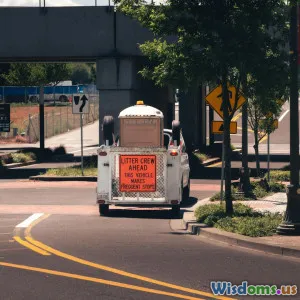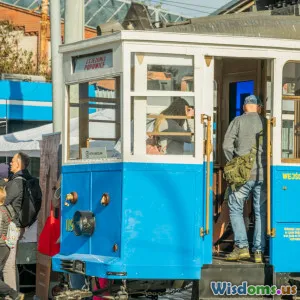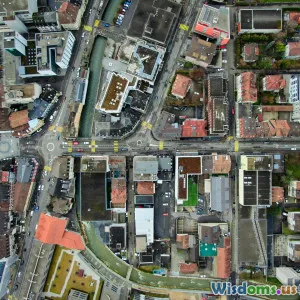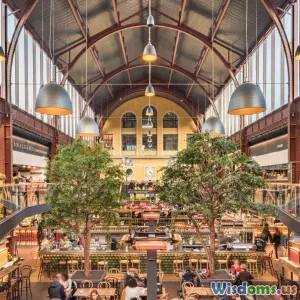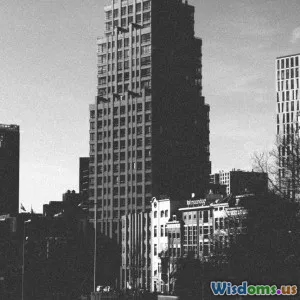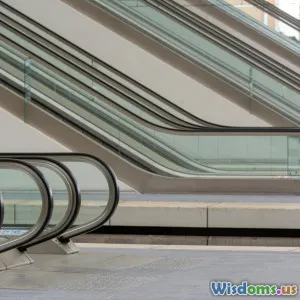
Transforming Public Spaces with Technology
7 min read Explore how technology is revolutionizing public spaces to enhance urban living and community engagement. (0 Reviews)
Transforming Public Spaces with Technology
Public spaces have historically served as the heart of cities — centers where communities connect, culture flourishes, and daily life unfolds. But as urban populations surge and societal demands evolve, the traditional city square or park requires reimagining. Enter the era of technology-enhanced public spaces: blending digital innovation with architecture and urban design to create environments that are adaptive, interactive, and sustainable.
The New Frontier in Urban Design
Urban planners and architects face mounting challenges such as climate change, resource management, and inclusivity. In response, technology is stepping in as both a powerful tool and a medium of expression. From embedded sensors to augmented reality, today's public spaces embody a fusion of physical design with smart technologies.
Smart Infrastructure and Real-Time Data
Modern public spaces rely increasingly on Internet of Things (IoT) sensors embedded in streets, benches, lighting systems, and green areas. These sensors gather data on foot traffic, air quality, noise levels, and energy consumption.
For instance, in Barcelona's Smart City initiative, more than 480 sensors collect and analyze environmental data to optimize everything from irrigation schedules in parks to waste collection efficiency. This real-time responsiveness not only conserves resources but improves visitor comfort by dynamically adjusting lighting or shading depending on use and weather.
Interactive Technology: Enhancing Engagement
Interactive installations invite users to actively engage with their environment. Examples include digital kiosks offering city information, wayfinding augmented reality apps, and touch-sensitive walls or floors that respond to movement.
A case in point is Lowline Lab in New York City, a pioneering underground park project that uses solar technology to redirect natural light below street level, integrating natural elements with tech innovation. Visitors can see solar panels and sensors working in tandem through interactive displays, creating an immersive educational experience.
Augmented and Virtual Reality in Public Spaces
Augmented reality (AR) layers information onto the physical world, transforming passive observation into an interactive exploration. Cities are experimenting with AR for storytelling, heritage preservation, and navigation.
Berlin’s “Stadtmacher” project uses AR to allow visitors to visualize historical building facades that were destroyed during wartime overlaying the present-day cityscape, fusing history with urban exploration.
Moreover, virtual reality experiences hosted in public libraries or parks can provide immersive learning and art exhibits accessible to diverse audiences.
Sustainable Urban Solutions
Sustainability is a cornerstone of modern urban technology. Solar-powered lighting, green roofs integrated with smart irrigation, and energy-harvesting pavements reflect this trend.
In Copenhagen, the Green Cycle Highway incorporates smart lighting that adjusts intensity based on bicycle traffic, and solar-powered charging stations, encouraging eco-friendly commuting while improving safety and usability of public routes.
Data-Driven Design and Citizen Participation
Technology fuels participatory urban design platforms enabling community input and co-creation. Tools like UrbanFootprint or Neighborland allow residents to upload ideas, report issues, or vote on projects from smartphones.
This data-driven feedback loop informs planners and architects, ensuring public spaces reflect the diverse needs of their users and fostering inclusive, equitable urban development.
Challenges and Considerations
While the integration of technology unlocks exciting possibilities, it also introduces challenges:
- Digital Divide: Not all demographics have equal access or affinity to tech-enhanced experiences, potentially marginalizing some groups.
- Privacy: Sensors and data collection must be managed with transparency and respect for citizens’ privacy rights.
- Maintenance Costs: Advanced infrastructure demands ongoing funding and expertise.
Addressing these challenges requires collaborative governance, ethical frameworks, and holistic planning.
Looking Ahead: The Future of Tech-Enabled Public Spaces
The trajectory points toward increasingly adaptive environments. Imagine public plazas that sense crowd density and reconfigure seating or art installations accordingly, or urban forests augmented with real-time environmental alerts helping communities respond to climate events.
Architectural experimentation with 3D-printed structures, biotechnologies, and AI-driven environmental controls suggests a future where the boundaries between natural and built, physical and digital blur.
Conclusion
Technology is not just an add-on to urban design; it’s reshaping what public spaces can be. By harnessing IoT, interactive media, AR/VR, and sustainable tech, cities are crafting responsive, engaging, and resilient environments that meet the complex demands of modern life.
This transformation enhances social interaction, environmental stewardship, and civic participation—elements vital to livable, thriving cities. As technology continues to evolve, architects, planners, and communities must embrace these tools thoughtfully, ensuring that public spaces remain inclusive, vibrant, and vital for generations to come.
References:
- Barcelona Smart City Project: https://ajuntament.barcelona.cat/ecologiaurbana/en/barcelona-smart-city
- Lowline Lab, NYC: https://www.thelowline.org/
- Stadtmacher AR Project, Berlin: https://stadtmacher.berlin/
- Copenhagen Green Cycle Highway: https://stateofgreen.com/en/profiles/city-of-copenhagen/news/green-cycle-highways-copenhagen
- UrbanFootprint platform: https://urbanfootprint.com
- Neighborland platform: https://neighborland.com
Authored by urban innovation enthusiast focusing on the nexus of design and technology.
Rate the Post
User Reviews
Popular Posts











